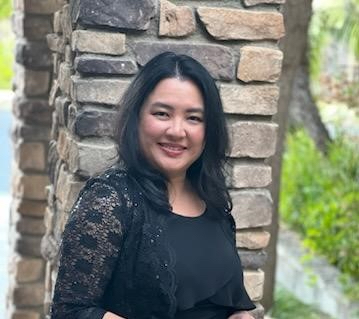“Shōgun” Stunt Coordinator Lauro David Chartrand-DelValle on Lady Mariko’s Last Stand
In part one of our conversation with Shōgun’s stunt coordinator and second unit director, Lauro David Chartrand-DelValle, he shared details about the extensive choreography training for the cast and what made Lord Toranaga’s (Hiroyuki Sanada) fighting style distinctive. Now, we turn toward Toranaga’s two allies, the “Anjin,” English sailor John Blackthorne (Cosmo Jarvis), and the woman Toranaga tasks with acting as Blackthorne’s translator, Lady Mariko (Anna Sawai).
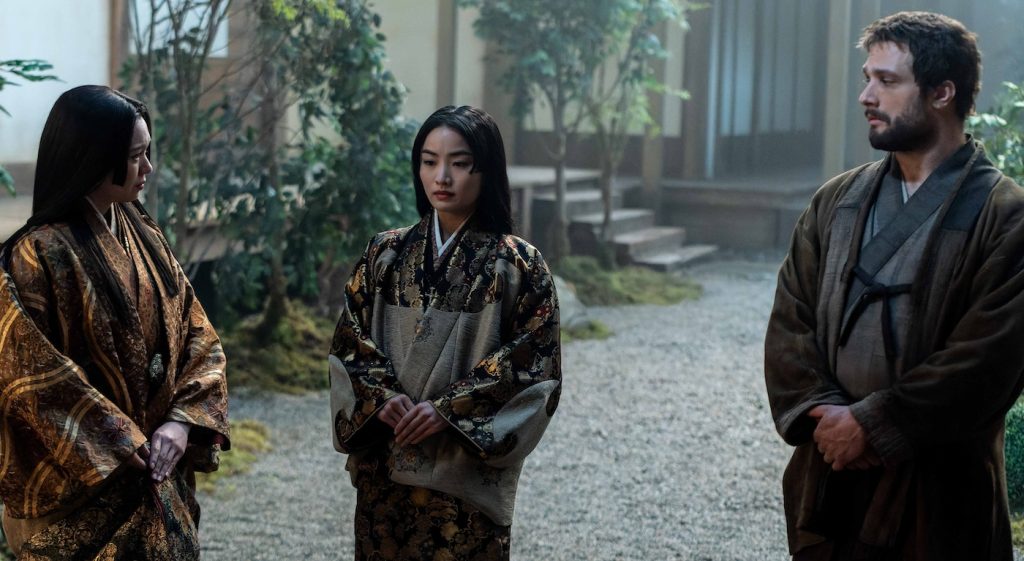
When an assassin breaks into Blackthorne’s house to kill him in episode 2, “Servants of Two Masters,” we follow her from room to room. Can you break down that sequence?
The female warrior, Shinobi, infiltrated the castle as a maid for two years undercover. But Toranaga traded rooms with him and ended up slashing her throat instead. The whole sequence following her through the different rooms in the castle and killing people as she tries to find her way to Blackthorne’s room was done as a one-shot sequence, so it looks really cool. We didn’t want to fall into the Hollywood ninja trope with guys all in black. Ninjas were like undercover agents, so she was just dressed as a maid—we didn’t have her face covered. The guys who attacked the castle later were all covered, but in grays, browns, and blacks, not straight black, so they melded better into the shadows.
After Blackthorne trains Toranaga’s soldiers to use Western weaponry, there is a gruesome sequence in episode 4, “The Eightfold Fence,” when his son Nagakado brings the fight to the enemy and attacks Lord Ishido’s men with cannons and chain shots. How did you create that?
Instead of putting a cannonball into the cannons, they used chains to cut down the mast on a ship. Since Blackthorne is a sailor, that was one of his tricks—the chain whips around the mast and cuts it, so the other ship couldn’t sail anymore. But he used it in the battlefield instead, cutting men in half, cutting their heads or legs off, it was a mess of bodies flying around. I had nine stuntmen on ratchets being pulled from different points on their body, so it looked like their arm or legs came off. Some got cut in half or look like their head got cut off. They were attached to wires, and we have a pneumatic ramp pulling them really quickly, so the impact looks very real. They kept letting me amp up the sequence, so we added horses. At one point, we had three horse stunts while the ratchets were going off. It was a lot of fun. When I first read that scene, I showed Justin a video from Rambo: Last Blood, where he shoots people with a 50-cal machine gun and cuts them in half. I asked, ‘Is this too much? Or is this what you’re looking for?’ He loved it, so that’s where that came from.
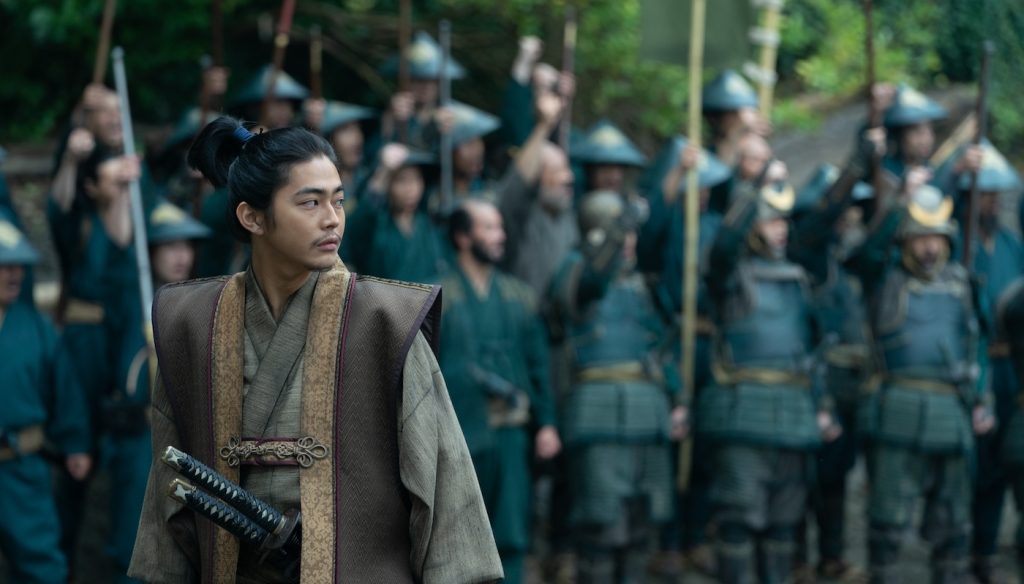
[Spoiler] Mariko’s character takes a surprising turn towards the end, and in episode 9, “Crimson Son,” we come to learn she’s a female samurai.
By this point in the story, Mariko has become more confident and in command. She used the Naginata [a polearm weapon used by female warriors in feudal Japan]. Anna is very physical; she’s had dance and martial arts training. Since she already had the stances and the movement, it was just a matter of getting used to the weapons in her hand. Someone trained in martial arts is used to blocking, punching, and striking, so it’s just doing that with a weapon in your hand. It was easier for her to learn all that. We also wanted to show her growth throughout the series, with some scenes when a young Mariko was in tournaments until she became a female samurai. She was a formidable adversary with her weapon. In the sequence in Episode 9, where she fought her way out of Osaka Castle, Anna performed 99.9% of all that choreography.
That was a very powerful sequence—she was surrounded by Lord Ishido’s men, and it looked hopeless for a minute until she fought each one of the guys herself. Was she using a particular fighting style?
No, it was all Japanese sword work, Iaidō and Batto. We had a few spears, the Yari. The Naginata cuts like a sword, but the spear is for thrusting—it’s a longer-range weapon. You don’t want to let somebody with a sword get inside. If they get too close, your spear is almost no use. We saved most of the spears to the end to keep Mariko cornered. With her Naginata, it was long-range against long-range. That was my favorite battle to put together: with 40 guys fighting, it was the closest to something we did on The Last Samurai as far as size. We had almost 1,000 guys on the battlefield on Samurai at one point, so that was a whole other ballgame.
How long did that sequence with Mariko take to choreograph?
Almost two weeks. I went on all the location scouts to see where we were going to do it so I could measure it out. We had the arrows coming into the ground as Mariko and her crew marched all the way through the courtyard. We tried to rehearse in the studio but there wasn’t enough room, so we took over the set where we’re actually going to shoot it and did the whole march with all our guys in place so they knew exactly how it would play out.
These sequences are so complex and the stuntmen have to do it all wearing the ornate headpieces, armor, and the jinbaoris [the stunning vests worn over the armor]. What was it like working with performers in such layered, textured costumes?
I gotta hand it to the costume department [led by costume designer Carlos Rosario]—they did such an amazing job. Very, very few of my guys complained about it. The helmets were very steady, and they were tied on very well. On other projects, the helmets move around; it’s hard to concentrate, and it goes over your eyes, and you can’t see. We didn’t really have those problems on Shōgun. It was especially tricky for Mariko and the female actors and stunt doubles. Because it was so authentic, they wanted them to walk and keep their knees together. So, they’re basically tiptoeing along and can’t take big steps. To swing the naginata and fight and thrust at this person and then swing into that person usually takes three steps, so that wasn’t easy.
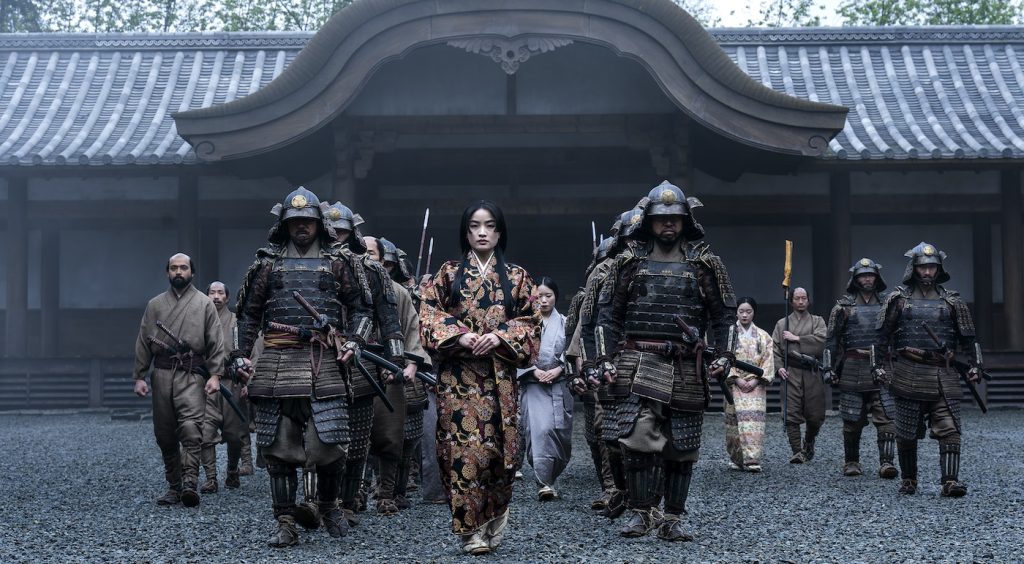
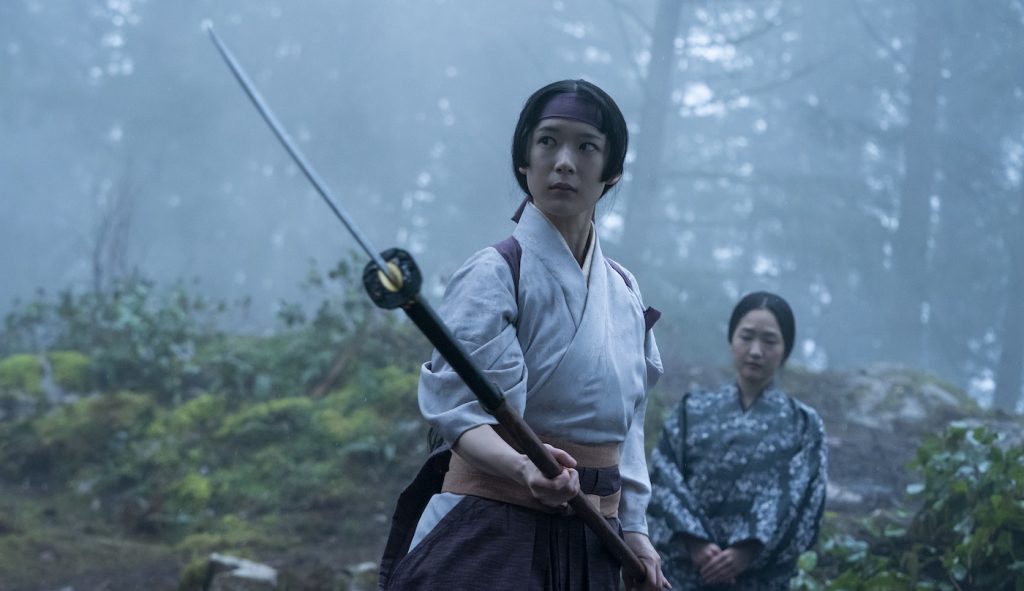
That must have made the wire work even more challenging.
Definitely, when we have to wear a harness, the wires have to come out through the costume. One of the biggest sequences is when they rescue Yabushige after he is washed overboard, and Blackthorne insists on saving him. They climb a cliff to get to Yabushige, and Blackthorne rappels down. We built a cliff face and had a water tank with another cliff in it. It took four or five locations to put this whole piece together, from going up the mountain on the cliff face, which was real, to a set piece and another huge cliff face built near the village set. Finally, we had the dunk tank where he falls and lands on the rocks and then goes to pull the guy out of the water and almost drowns. We shot some of it on Vancouver Island in the ocean and some of it in the tank. They spared no expense on this. Blackthorne’s ship [for the shipwreck during a storm in the pilot] was a full-size ship on a special effects gimbal—I think it was repurposed from Peter Pan.
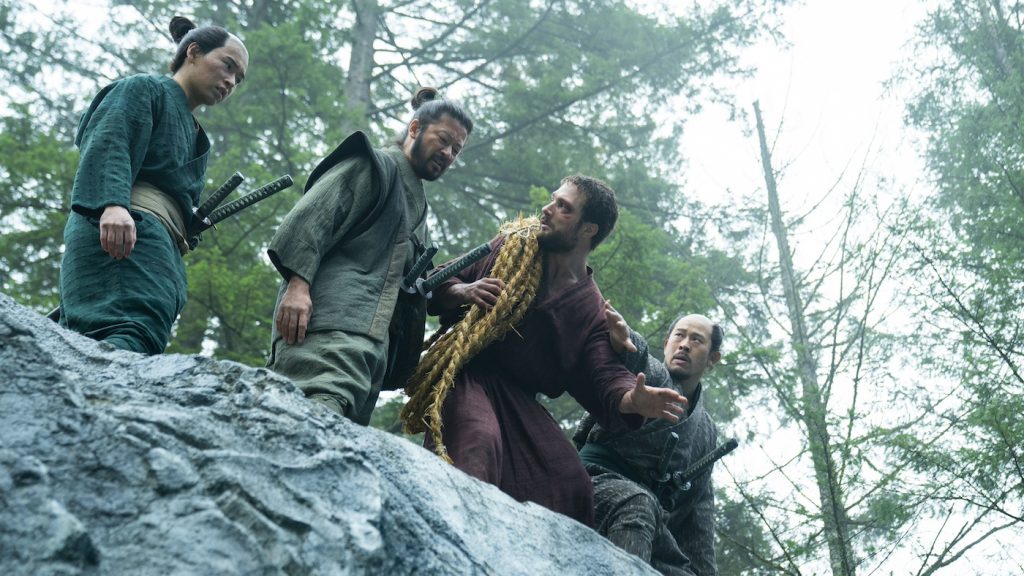
How long did second unit production last?
A month and a half or so, anywhere from two to five days per episode. Besides my second unit, Michael Cliett, our visual effects supervisor, also the second unit directed anything to do with visual effects and drone filming for the epic, sweeping scenes. We shared the second unit work: I took care of the action, and he took care of all the visual effects.
Shōgun is streaming on Hulu and Disney+ and available on demand on FX.
For more on Shōgun, check out these stories:
The Samurai Sword and the Flaming Arrow: Inside the Stunts of “Shōgun” – Part One
“Shōgun” Score: Atticus Ross & Co Meld Ancient Soul to Modern Tech
Featured image: “SHOGUN” — “Crimson Sky” — Episode 9 (Airs April 16) Pictured (C): Anna Sawai as Toda Mariko. CR: Katie Yu/FX


